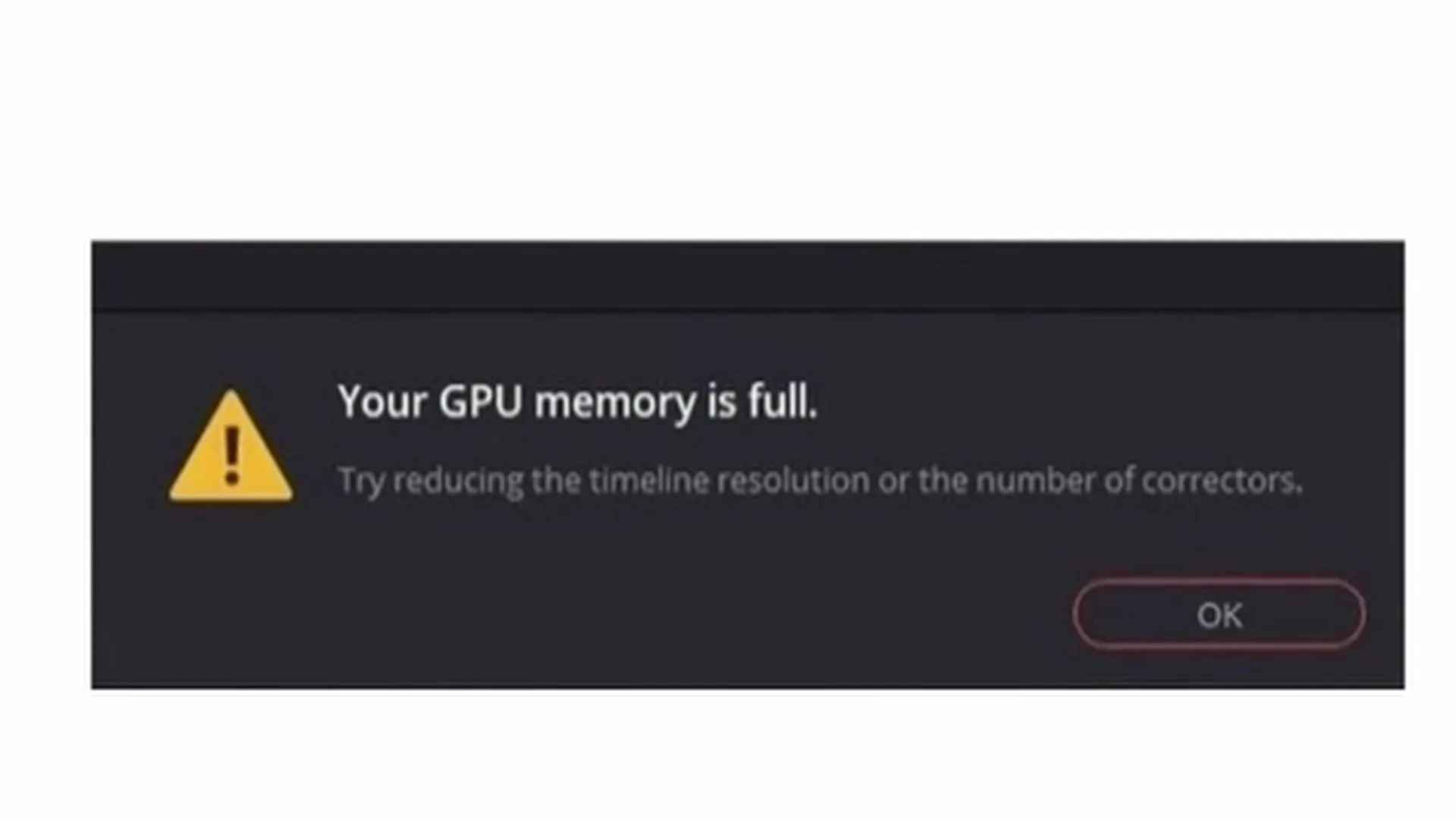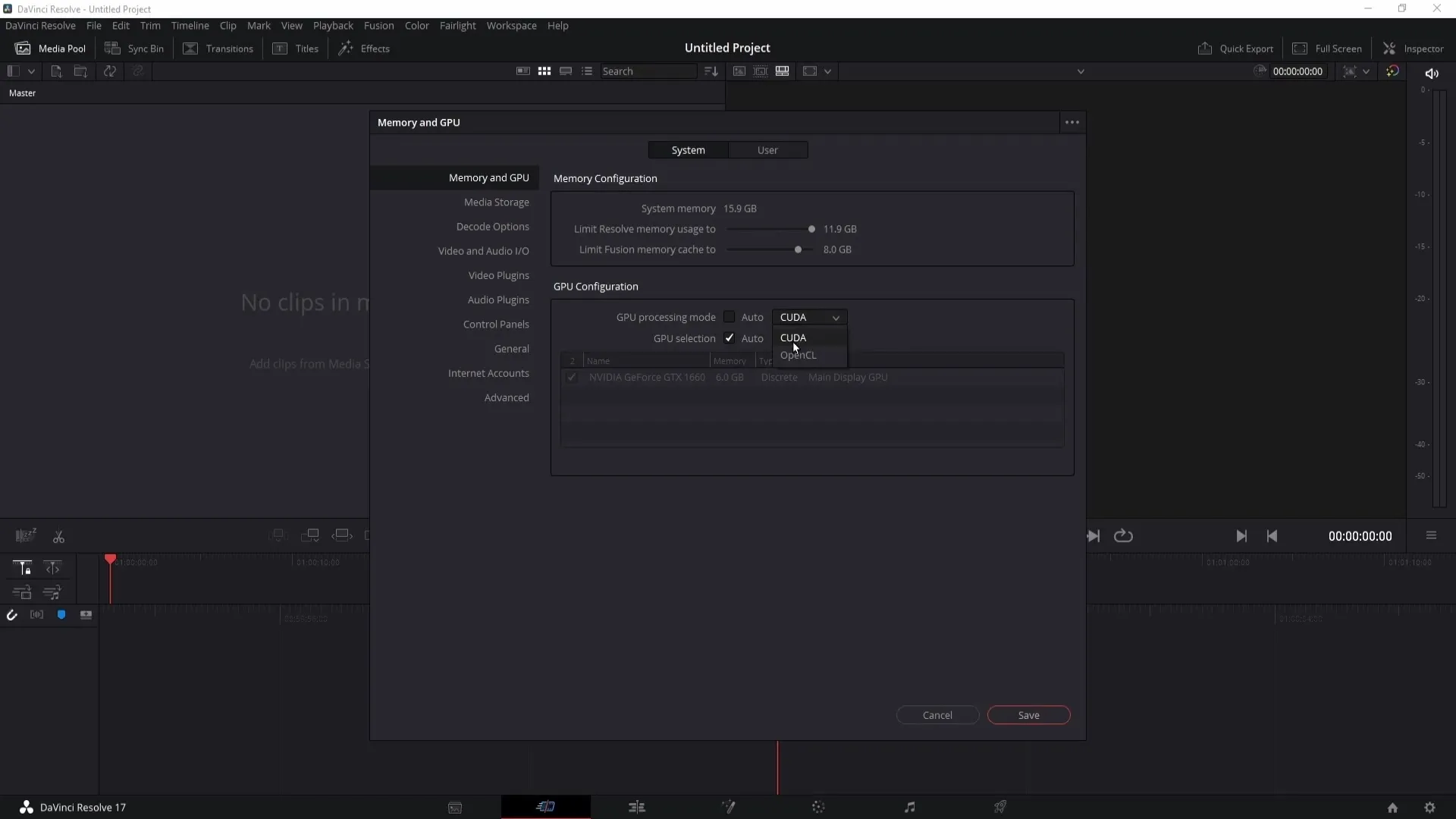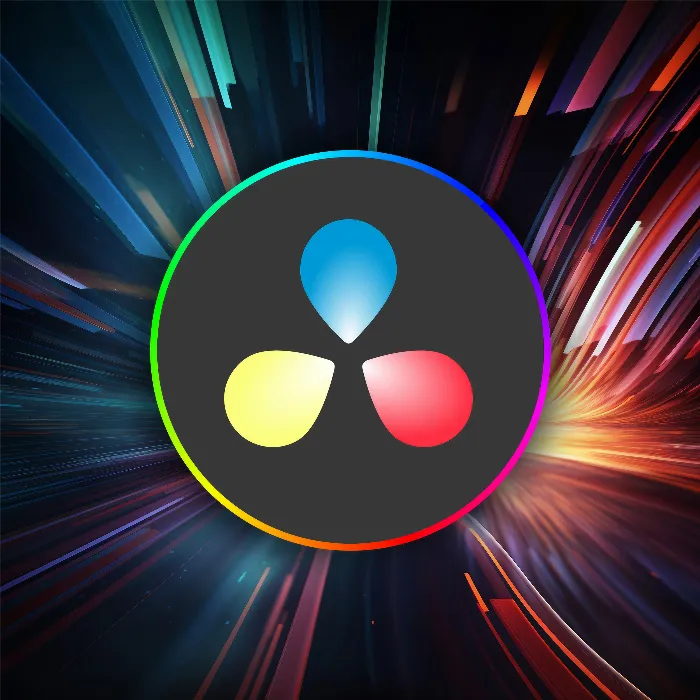You received the message "GPU Memory is full" in DaVinci Resolve and don't know what to do next? Don't worry! In this guide, you will learn how to fix this issue. The error message often occurs when the demands on the graphics card exceed the available resources. There are various approaches to solve this problem. Below, I will explain four simple methods that will help you bypass the message and continue your projects smoothly.
Main Takeaways
To fix the error message "GPU Memory is full," you can apply the following strategies:
- Reduce the size of images.
- Switch GPU mode.
- Perform noise reduction through Fusion.
- Update graphics card driver.
Step-by-Step Guide
To understand and fix the causes of the "GPU Memory is full" message, follow the steps below:
Step 1: Scale images to the correct size
If you import many images into DaVinci Resolve, they may be too large. To check this, right-click on the image, go to properties, and check the height and width. If these dimensions are significantly above 1920 x 1080, you should scale down the images. This means reducing both the width and height. Then re-import the images into your project.

Step 2: Switch GPU mode
An easy but effective method to solve the problem is to switch the GPU mode. Go to preferences in DaVinci Resolve. In the top left corner, you will find the "DaVinci Resolve" menu and then select "Preferences." Under "Memory and GPU," you will find the section "GPU processing mode." There, you can choose between different options. If you have an Nvidia graphics card, choose "CUDA" as this mode works better in most cases. For a Mac, you should select the "Metal" option. If you are unsure about your graphics card, you will also find the name of your graphics card under preferences.
Step 3: Noise Reduction (Rauschreduzierung) through Fusion
Another way to reduce GPU usage is to perform noise reduction through Fusion. Click on the magic wand at the bottom to enter the Fusion area. Here, you can adjust the noise reduction. Press "Ctrl" + "Spacebar" to open the search field and type "neus." Then select the "Remove Noise" option. This way, you can effectively remove image noise and improve your GPU's performance.
Step 4: Update graphics card driver
If the previous steps have not led to a solution, it may be that your graphics card driver is outdated. To update the driver, you first need to know which Nvidia graphics card you have, which you can check in the preferences of DaVinci Resolve. Go back to the settings, note down the name of the graphics card, and then search online for the official Nvidia website. There you can find and update your driver accordingly.

Summary
In this tutorial, I have presented four different approaches on how to fix the error message "GPU Memory is full" in DaVinci Resolve. By reducing image size, switching GPU mode, applying noise reduction, and updating your graphics card driver, you can significantly improve the performance of your program and continue working smoothly.
Frequently Asked Questions
How can I change the size of my images in DaVinci Resolve?You can change the size of images by right-clicking on the image and checking the properties. Reduce the width and height to scale down the file.
What should I do if switching the GPU mode does not work?If switching the GPU mode does not work, try adjusting the image sizes or perform noise reduction in the Fusion area.
How can I find out which graphics card driver I need to update?To find the required graphics card driver, go to DaVinci Resolve preferences. The name of your graphics card will be displayed there.
Where can I download the latest drivers for my Nvidia graphics card?You can find the latest drivers on the official Nvidia website. There, you can search for the model of your graphics card and download the appropriate driver.

